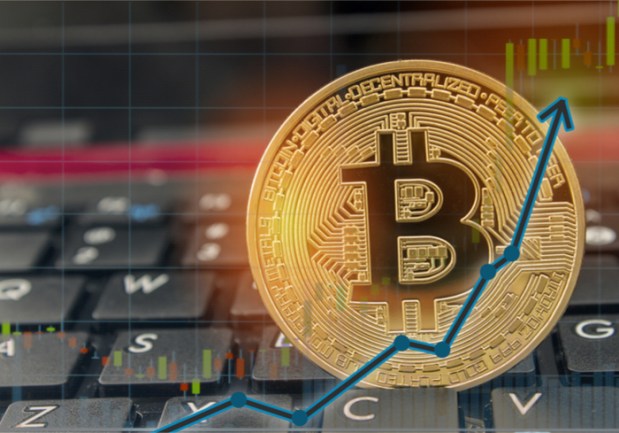Bitcoin’s Atmospheric Rise Might Have Been Tied To Tether

University researchers have noticed an interesting trend when it came to atmospheric jump in the price of bitcoin last year: They found that about half of bitcoin price increases last year happened after another cryptocurrency, Tether, flowed from one crypto exchange — Bitfinex — to other exchanges.
This is significant as Tether, which is said to be pegged to the U.S. dollar and created by Bitfinex’s owners, could be used to buy other digital currencies, such as bitcoin. Even so, Bitfinex’s Chief Executive J.L. van der Velde said in a statement, “Tether issuances cannot be used to prop up the price of Bitcoin or any other coin/token on Bitfinex,” The New York Times reported.
That statement comes as a study by University of Texas Finance Professor John Griffin – along with graduate student Amin Shams – is raising questions as to whether bitcoin’s remarkable rise in 2017 was not, in fact, caused by genuine demand from investors. The authors found that Tether was used to purchase bitcoin at pivotal points when the price of the cryptocurrency was falling, according to CNBC.
“It was creating price support for bitcoin, and over the period that we examined, had huge price effects,” Griffin told CNBC. “Our research would indicate that there are sophisticated people harnessing investor interest for their benefit.”
More specifically, Griffin and Shams, honed in on 87 periods when Tether flowed from Bitfinex to other exchanges between March 2017 and March 2018, a report by Entrepreneur noted. And they found that “these 87 events account for less than 1 percent of our time series (over the period from the beginning of March 2017 to the end of March 2018), yet are associated with 50 percent of bitcoin’s compounded return, and 64 percent of the returns on six other large cryptocurrencies (Dash, Ethereum Classic, Ethereum, Litecoin, Monero and Zcash).”
Still, The New York Times reported that the paper’s authors don’t have documents or emails that show Bitfinex knew about the potential price manipulation — and, if that was in fact the case, who might have behind those moves. Griffin and Shams also found that the pattern extends to price increases of Zcash and Ether — both digital currencies that one can purchase with Tether. Notably, these patterns came to a halt after Bitfinex stopped issuing new Tether tokens.
Claims of bitcoin price manipulation are not new: Griffin’s paper comes a few months after researchers Neil Gandal, JT Hamrick, Tyler Moore, and Tali Oberman published a paper on bitcoin price manipulation in 2013, which describes the extent to which the bitcoin ecosystem is controlled by bad actors. According to TechCrunch, the paper, entitled “Price Manipulation in the Bitcoin Ecosystem,” appears in an issue of the Journal of Monetary Economics. The paper claims “suspicious trading activity likely caused the unprecedented spike in the USD-BTC exchange rate in late 2013, when the rate jumped from around $150 to more than $1,000 in two months.”
On Tuesday (June 12), bitcoin hit its lowest price level since February, briefly dipping below the $6,500 mark, Bloomberg reported. On Wednesday, (June 13) at 4:40pm, the price of bitcoin was $6,260.34, according to CoinDesk. The popular cryptocurrency hit a high of $19,511 in December, following a whopping 1,400 percent rise in 2017.
